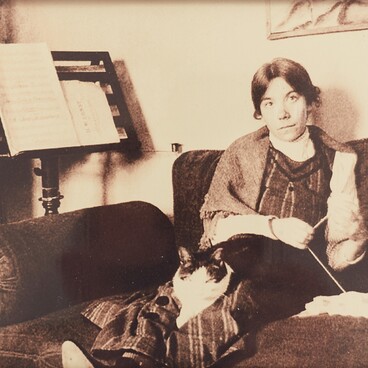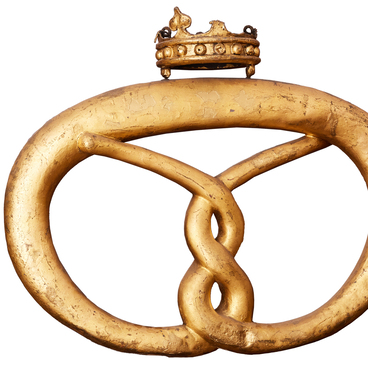In their search for a language of the new art, the attention of the Futurists was, among other things, drawn to icon painting. Sofia Ivanovna Baudouin de Courtenay executed the painting “Death of a Righteous Man” in an iconographic manner. She painted the work in tempera on board and placed it into an icon case.
The artist based this work on the traditional subject of hagiographic icons. She depicted a dying man with an angel standing by his bedside. Behind the angel’s back is a symbolic image of paradise with a flowering tree.
Sofia Ivanovna Baudouin de Courtenay (born in 1887 (according to other sources — January 1, 1889) — died in 1967) was a painter, graphic artist, scene painter and muralist. She studied in Saint Petersburg at the studio of Yan Franzevich Tsionglinsky from 1905 to 1906, she later continued her training in Munich with Simon Hollosy (1909–1908) and at the Académie Ranson in Paris (1909).
The artist took part in the exhibitions “Impressionists” (1909, 1910) and “Russian Secession” (1910), an exhibition of women’s portraits organized by the editorial office of the “Apollo” magazine (1910) and an exhibition of the “Knave of Diamonds” art group (1910-1911). She was a founding member of the “Soyuz Molodyozhi” (Union of Youth) association.
In her early works, she combined primitivism and church and folk art. The artist’s thinking was based on graphic stylization. Icon painting and medieval European art attracted her with the touching naivety, fragile forms, and pure local colors.
Sofia Baudouin de Courtenay participated in the design of the “Performances in the Palace” in 1911 — the immersive theater experiment of the Union of Youth. She ornamented the “Ceremony Room” together with Savely Yakovlevich Schleifer. The artist joined the avant-garde movement at its formation stage but soon withdrew from the collaboration with its organizers.
After 1915, she stopped participating in avant-garde exhibitions. In May 1917, Baudouin de Courtenay, together with the graphic artist Nadezhda Savelyevna Voytinskaya-Levidova, participated in the Salon Strindberg in Helsingfors (present-day Helsinki), where she exhibited eighty of her works. The artist’s pictures received critical acclaim, “All of them combine features of ‘primitivism’ and the wish to create something new with the old-fashioned church and folk art.”
In 1918, together with her family, she left Russia and
settled in Poland. She made book illustrations, frescoes and stained-glass
windows in churches in Gdansk, Sopot, and Czestochowa. Very few works of her
Russian period have been preserved.


